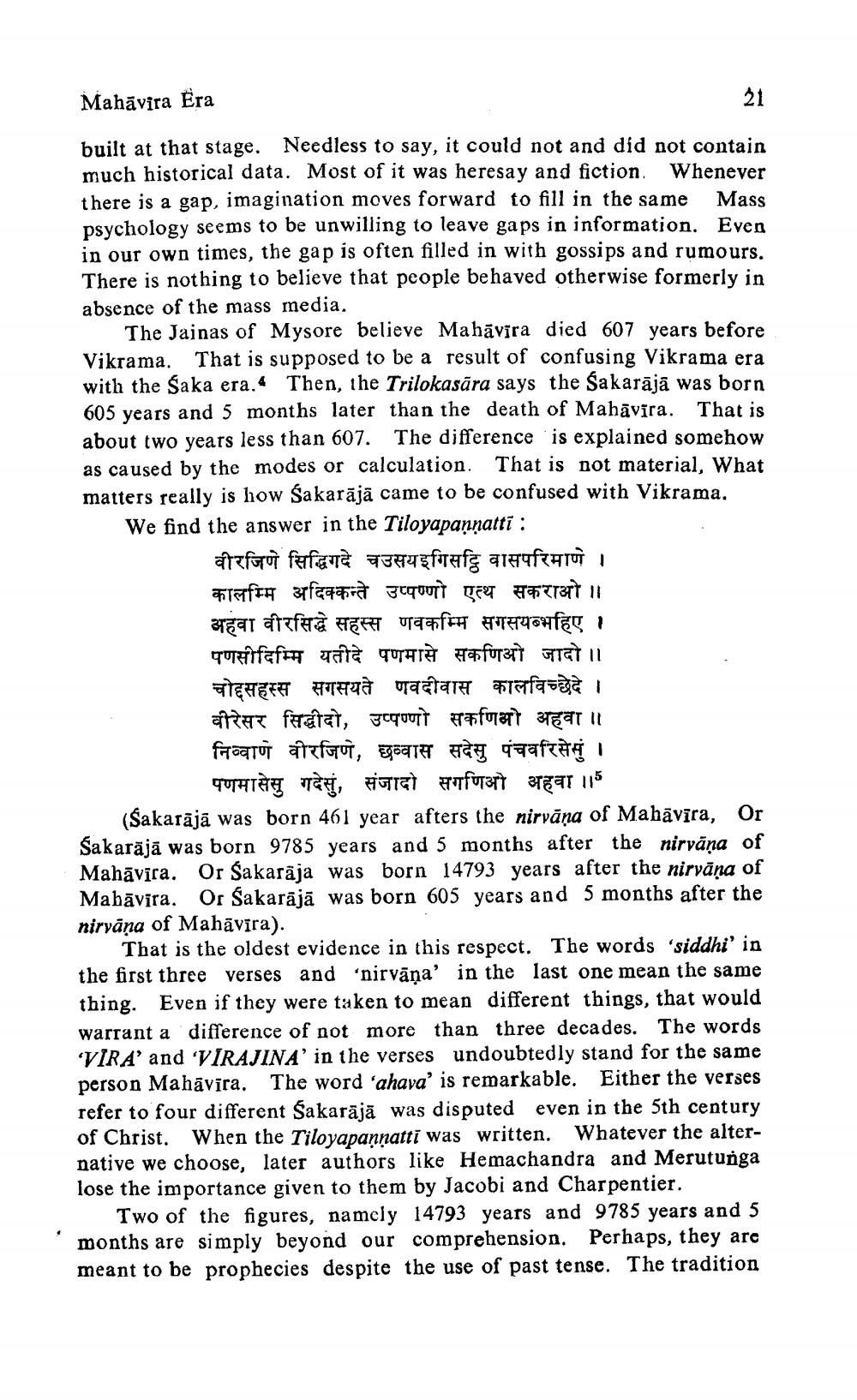________________
Mahāvira Era
21
built at that stage. Needless to say, it could not and did not contain much historical data. Most of it was heresay and fiction. Whenever there is a gap, imagination moves forward to fill in the same Mass psychology seems to be unwilling to leave gaps in information. Even in our own times, the gap is often filled in with gossips and rumours. There is nothing to believe that people behaved otherwise formerly in absence of the mass media.
The Jainas of Mysore believe Mahāvīra died 607 years before Vikrama. That is supposed to be a result of confusing Vikrama era with the Saka era. Then, the Trilokasāra says the Sakarājā was born 605 years and 5 months later than the death of Mahāvīra. That is about two years less than 607. The difference is explained somehow as caused by the modes or calculation. That is not material. What matters really is how Sakarājā came to be confused with Vikrama. We find the answer in the Tiloyapaņņatti :
वीरजिणे सिद्धिगदे चउसयइगिसट्ठि वासपरिमाणे । कालम्मि अदिक्कन्ते उप्पण्णो एत्थ सकराओ। अहवा वीरसिद्धे सहस्स णवकम्मि सगसयब्भहिए । पणसीदिम्मि यतीदे पणमासे सकणिओ जादो॥ चोद्दसहस्स सगसयते णवदीवास कालविच्छेदे । वीरेसर सिद्धीदो, उप्पण्णो सकणिो अहवा ॥ निव्वाणे वीरजिणे, छव्वास सदेसु पंचवरिसेमुं ।
पणमासेसु गदेसुं, संजादो सगणिओ अहवा ।। (Sakarājā was born 461 year afters the nirvana of Mahāvīra, Or Sakarājā was born 9785 years and 5 months after the nirvāna of Mahāvīra. Or Sakarāja was born 14793 years after the nirvāņa of Mabāvīra. Or Sakarājā was born 605 years and 5 months after the nirvana of Mahāvīra).
That is the oldest evidence in this respect. The words siddhi' in the first three verses and nirvāna' in the last one mean the same thing. Even if they were taken to mean different things, that would warrant a difference of not more than three decades. The words 'VIRA' and 'VIRAJINA' in the verses undoubtedly stand for the same person Mahāvīra. The word 'ahava' is remarkable. Either the verses refer to four different Sakarājā was disputed even in the 5th century of Christ. When the Tiloyapannatti was written. Whatever the alternative we choose, later authors like Hemachandra and Merutunga lose the importance given to them by Jacobi and Charpentier.
Two of the figures, namely 14793 years and 9785 years and 5 months are simply beyond our comprehension. Perhaps, they are meant to be prophecies despite the use of past tense. The tradition




